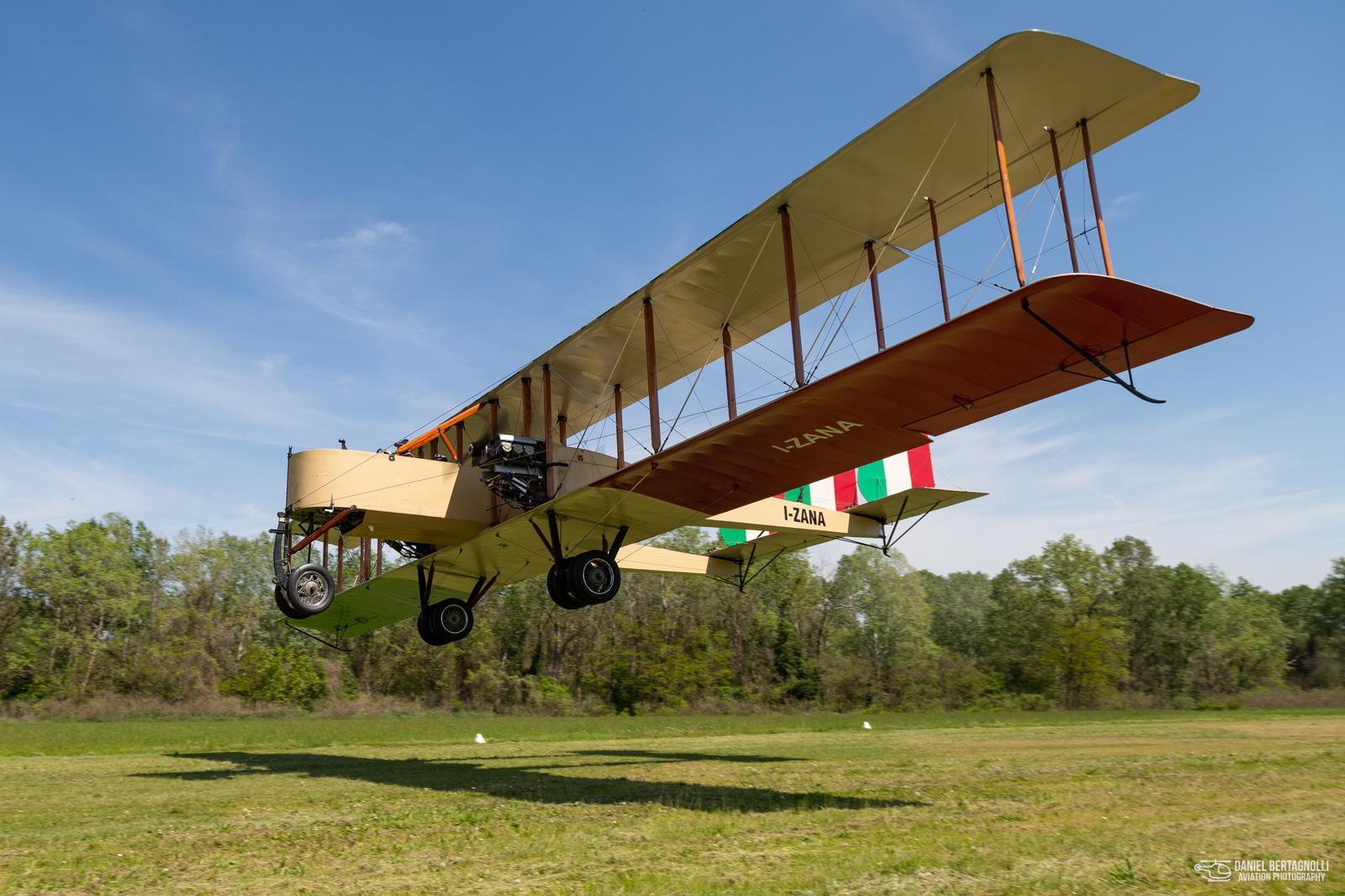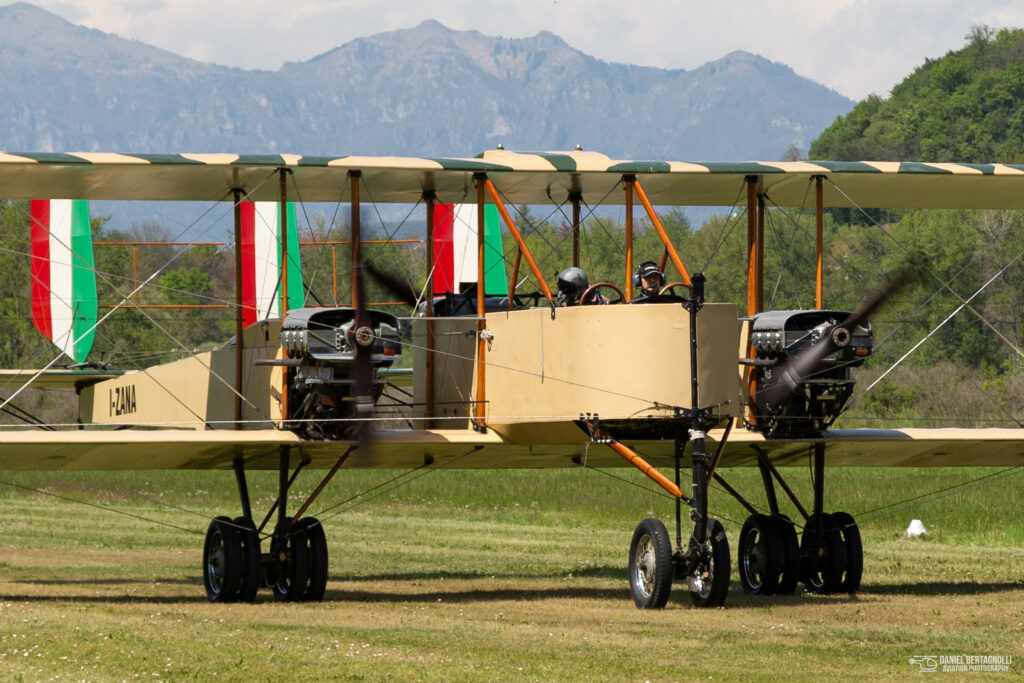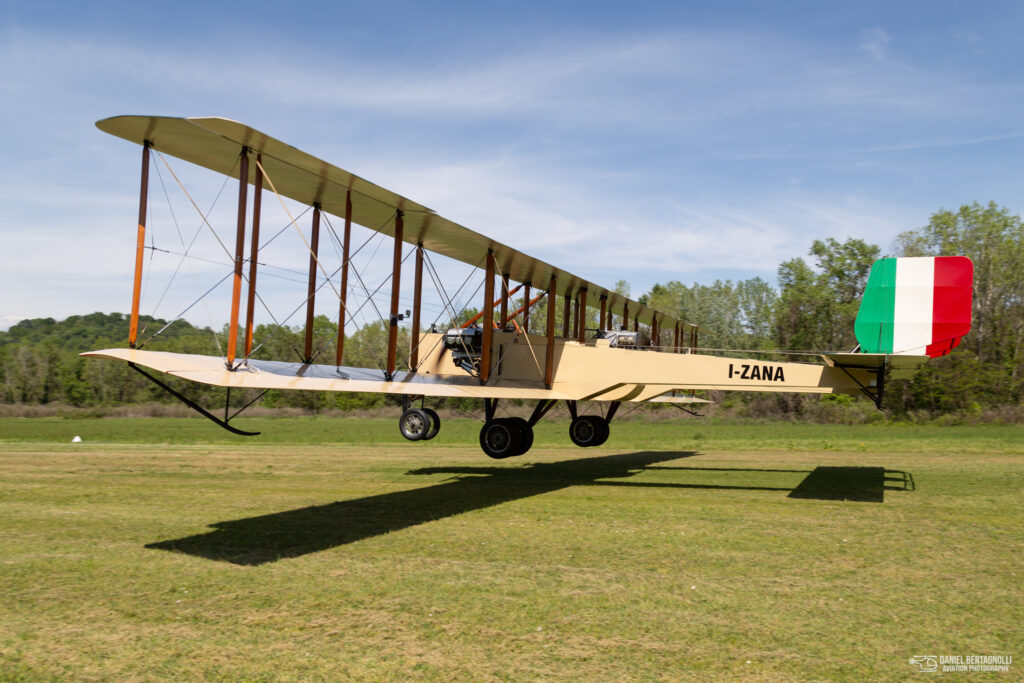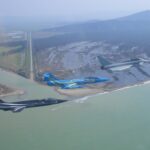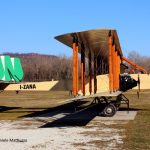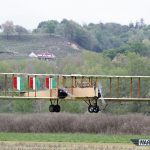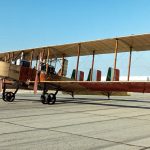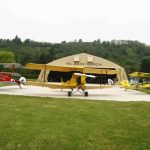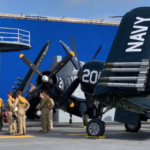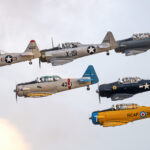On June 8, 2023, eight years after its first and only flight, the magnificent WWI-vintage replica Caproni Ca.3 bomber flew again near Nervesa della Battaglia airfield in northeastern Italy.
Back in April 2014, we reported on the first flight (short hop) of a remarkable aircraft near Venice, Italy, a replica of the magnificent, WWI-vintage Caproni Ca.3 bomber. Giancarlo Zanardo oversaw the construction of the aircraft over a seven-year period for the Jonathan Collection, at Francesco Baracca Airfield. Exactly a year later the airplane actually flew for a few minutes with Giancarlo Zanardo and Carlo Zorzoli at the controls.
While the aircraft made a safe first flight on March 3rd, 2015, there were still teething troubles to overcome regarding both the propellers and the lack of available power from the engines chosen for the replica. They were still hoping to rectify these issues when disaster struck in October, 2018; a massive flood hit the region, and the Jonathan Collection’s hangars were apparently three feet deep in muddy, debris-filled water for some time!
On June 8, 2023 aircraft builder Daniele Beltrami and former Italian Air Force Test Pilot Fabio Consoli took the three-engined Caproni Ca.3 for an actual test flight which resulted in a flawless evaluation with minor squawks. To date, five successful flights were conducted and Zanardo’s Johnatan Collection plans to fly the airplane to Pratica di Mare Airbase for the Italian Air Force Centenary air show the weekend of June 16-17-18.
The three-engined Caproni Ca.3 was a massive aircraft for its day, with a 36 foot fuselage and 74 foot wing span, and could carry an 800kg bomb load several hundred miles. The type evolved from the Ca.1 of 1914 and Ca.2 of 1915, but differed mainly in having more powerful engines. The type was introduced in 1916, and many saw combat service during WWI. It was a successful design, with roughly 300 built in Italy, and several dozen more under license in France – a substantial number for an aircraft of its size back then. Indeed, the type was still in service well into the late 1920s, with some believed to have taken part during the invasion into the Horn of Africa. Just two original airframes are known to survive, although both post-WWI examples. One is at the National Museum of the U.S. Air Force in Dayton, Ohio, and the other, of course, at the Italian Air Force Museum at Vigna di Valle, near Lazio.
Many thanks to Daniel Bertagnolli for providing the photos and the details about the first flight. For more information about Daniel and his work, visit www.danielbertagnolli.com







